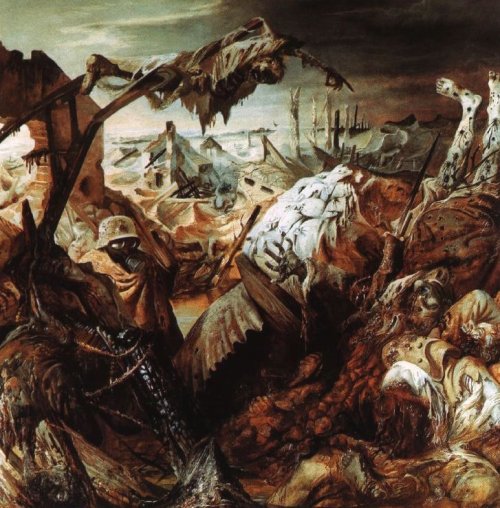Modern warfare, or at least for its time…
This painting is full of features depicting the
aftermath of World War I. The art after World War I was very much influenced
with descriptive representations of the horror that happened in the trenches,
and also the unfair treatment of returned war heroes.
It is rational with nature taken in account of the
time were there was generally a deep mistrust of society; it created the
expression of social resentment for the horror of war. The nature of the colors
tells me that this artist is maybe trying to empower the political awareness
among society, and projecting that the future is not all so bright.
This reality shows the ugly side without any
sentimentality through a language of ideas that is expressed with very banal
themes; something as explicit as dreams. In this painting, it is the reality of
the situation that comes to expression more that the perspective of light, but essential
contour, and precise and tense expressions plays an important artistic role.
The reason why I mention dreams in this context is
because I am relating it to another very famous piece of art by Salvador Dali
called “The Persistence of Memory” (1931). It is two different artists, genres,
and times. Essentially everything is
different, but I draw a line between these two paintings in the setting, and
most important the essence or first expression of destruction.
Sources:
3



Ahmed,
ReplyDeleteThe painting you reference by Otto Dix is not "The Trench" of 1921-23, but his later painting, "Trench Warfare", which actually is contemporaneous with Dali's "The Persistence of Memory", having been painted around 1932-33. "The Trench" was last seen in 1940, and it is variously believed to have been burned by the Nazis as an example of degenerative art, sold to a private dealer in 1940 (there is a receipt in existence), or looted at the end of the war.
JR